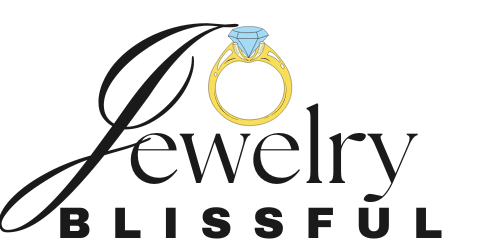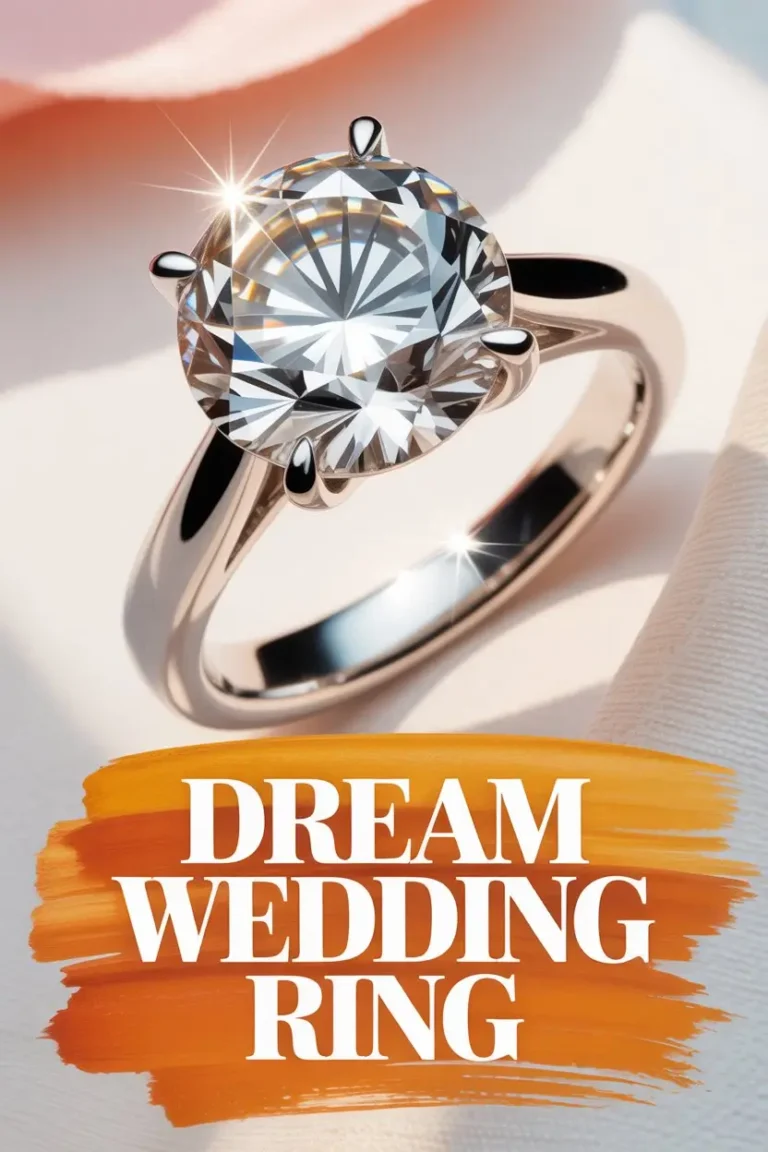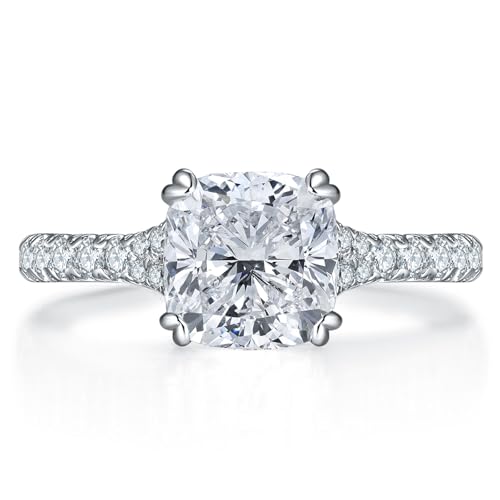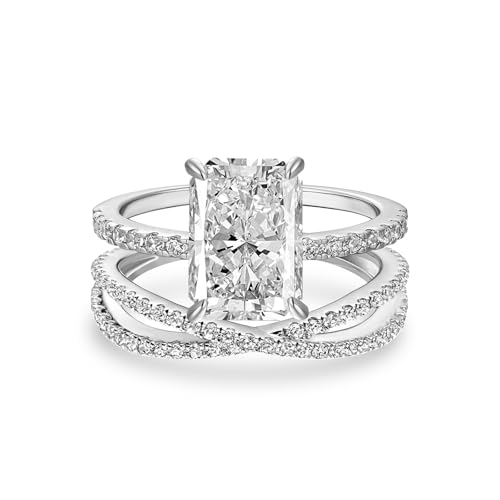The dream wedding ring you choose will live on your hand through grocery runs, board meetings, long flights, and loud dinners with people you love. It should feel like you: beautiful, comfortable, practical, and meaningful. Finding that piece is less about chasing trends and more about clarity on taste, values, and daily life.
This guide gives you the information and confidence to make a choice you’ll smile at every morning.
Start with your life, then your style
Before you think about carats or karats, look at your day-to-day. Rings are jewelry and also tiny machines that have to work in the real world.
Ask yourself:
- What do my days look like at work and at home?
- Do I wear gloves, lift weights, garden, or rock climb?
- Am I drawn to clean lines or vintage detail?
- Do I want low maintenance or am I fine with periodic touchups?
If you’re active, a lower profile setting, more secure edges, and tougher metals can save you worry. If you love delicate sparkle, there are ways to add light without sacrifice, like bezel-set accents or channel-set sides that keep stones protected.
Your taste matters, but so does your routine. The sweet spot is where both meet.
A smart budget that reflects your priorities
Ignore the old salary myth. Set a number that fits your financial picture and what you value.
- Determine a total spend for the ring, not just the center stone.
- Decide whether size, sparkle quality, brand name, or designer work matters most to you.
- Leave room for tax, insured shipping, and potential resizing or custom tweaks.
- If the center stone is a diamond, many buyers choose to prioritize cut first because it controls brightness and life.
Cost can vary widely. Lab-grown diamonds often price 40 to 70 percent below mined stones of the same grades. Vintage rings can bundle metalwork and stones for a strong value. Moissanite, sapphire, or a salt-and-pepper diamond can make a bold impact within a tight budget.
Spend where your eyes and fingers will notice it daily: cut quality, secure construction, and comfort.
Gemstones decoded: the 4Cs without the noise
The 4Cs give a shared language for diamond quality. They also come with tradeoffs.
- Cut: The key driver of brilliance. Look for excellent or ideal cut grades from a respected lab. Well cut stones look bigger and brighter than poorly cut ones of the same weight.
- Color: Higher color means less tint, moving from icy white to warmer tones. Many people love the warmth of J to K in yellow gold, and prefer G to H in white metals.
- Clarity: Fewer visible inclusions. Eye-clean SI1 or VS2 often looks identical on the finger to higher grades, freeing budget for better cut or more size.
- Carat: Weight, not size. Millimeter measurements tell you spread on the finger. Two stones of the same carat can face up differently.
Extra details that matter:
- Symmetry and polish influence the crispness of sparkle.
- Fluorescence can be a money saver in mid colors and may add a soft glow in sunlight. High levels in very high color stones can look slightly hazy. Always review videos or see in person.
- Choose a grading report from GIA or AGS for mined diamonds. For lab-grown, IGI and GIA both issue reports. Read the numbers, not just the headline grade.
A simple rule of thumb: cut first, then color, then clarity, then carat, adjusting to your taste and metal choice.
Shape speaks volumes
Shape changes personality, finger coverage, and vibe.
- Round: Classic, balanced brilliance, works with almost any setting.
- Oval: Elongating look, lots of spread, check for bow-tie darkness across the middle.
- Cushion: Soft corners, from chunky to crushed-ice looks. Great in antique-inspired styles.
- Radiant: Angular sparkle with trimmed corners, masks color well.
- Emerald: Step cuts with mirror-like flashes. Prioritize clarity and a precise cut.
- Asscher: Square step cut, vintage charm, deep flashes.
- Princess: Sharp square outline, modern look, corner protection is important.
- Pear: Teardrop elegance, flattering spread, needs a protective tip.
- Marquise: Dramatic length, finger coverage is excellent, watch for symmetry.
- Heart: Playful and romantic, cut quality is critical.
Try on paper templates or order sample bands to see shapes on your hand. Visual tests beat guesswork.
Metals that age beautifully
The metal changes color tone, weight, and longevity. Yellow gold is having a strong moment. Platinum remains the go-to for durability and hypoallergenic needs. Rose gold brings warmth to the skin.
Here is a quick comparison.
| Metal | Color Tone | Durability & Wear | Maintenance | Hypoallergenic | Price Tier | Notes |
|---|---|---|---|---|---|---|
| Platinum 950 | Cool white, stays white | Very dense, scratches form a patina, prongs stay strong | Periodic polish optional | Yes | High | Great for longevity and daily wear |
| 18k White Gold | Bright white after rhodium plating | Hard, holds detail well | Re-plate every 12 to 24 months to maintain white color | Depends on alloy | Medium to High | Ask for nickel-free alloys if sensitive |
| 14k White Gold | Neutral white after plating | Tough and budget-friendly | Re-plate over time | Depends on alloy | Medium | Slightly more durable than 18k |
| 18k Yellow Gold | Rich yellow | Softer than 14k, still suitable for daily wear | Buffing restores shine | Usually yes | Medium to High | Complements warm skin and vintage styles |
| 14k Yellow Gold | Softer yellow | Durable and great value | Easy to maintain | Usually yes | Medium | Pairs well with lower color diamonds |
| 18k Rose Gold | Soft pink | Good strength, copper provides color | Minimal | Often not for copper-sensitive wearers | Medium | Romantic tone, vintage-friendly |
| Palladium | Natural white | Lightweight, strong | Minimal | Yes | Medium to High | Less common, limited availability |
White gold needs periodic rhodium plating to keep the crisp white finish. Platinum stays white through and through, forms a soft patina, and can be restored with a polish.
Settings and profiles that matter
The setting protects the stone and sets the mood.
- Solitaire: All about the center stone. Clean and timeless. Four prongs show more of the stone, six prongs add security and a rounder outline.
- Halo: Small stones encircle the center for extra size and sparkle. Keep pave craftsmanship high to avoid missing stones.
- Bezel: Metal encircles the stone. Very secure, sleek, and great for active hands.
- Pavé and micro pavé: Tiny stones along the band. Delicate look, but needs careful wear and quality workmanship.
- Channel: Stones fit between metal walls for a smooth edge. Good for daily wear.
- Three-stone: Symbolic and striking. Mix shapes for a fresh take.
- Toi et moi: Two stones side by side. Modern and romantic.
- East-west: Horizontal setting for oval, emerald, or marquise shapes.
- Cathedral: Arched shoulders lift the stone slightly for presence.
Profile height matters. Lower profiles catch less on sweaters and gloves. High profiles show off the stone but can bump into things. A thoughtful jeweler can keep a low silhouette while letting in light.
Comfort, sizing, and wearability
Your ring should disappear on the finger until you look down and smile.
- Comfort-fit bands have a gentle interior curve that feels smoother and accommodates swelling.
- Ask for quarter sizes if you fall between standard sizes.
- Finger size fluctuates with temperature, salt, and time of day. Try sizing late afternoon when hands are slightly larger.
- If your knuckle is larger than the base, consider a slightly larger size plus a silicone guard or sizing beads to prevent spinning.
- Low-profile designs and rounded edges reduce snagging.
Before finalizing, wear a sizing band for a day. Real life reveals what a ring box cannot.
Ethical and responsible choices
If origin and impact matter to you, there are clear steps you can take.
- Recycled gold and platinum reduce new mining demand while delivering the same material quality.
- Look for diamonds with documented origin, like CanadaMark or Sarine Diamond Journey programs.
- Be mindful that the Kimberley Process addresses conflict funding but not broader environmental or labor issues.
- Many lab-grown diamonds come from energy-intensive production. Ask about renewable power or SCS-007 certifications.
- Antique and vintage rings reuse existing materials and preserve craftsmanship, with a charm modern pieces cannot replicate.
Your ring can reflect your values without sacrificing beauty.
Natural diamond, lab-grown, and other gems
Each path has tradeoffs in cost, impact, and performance.
- Natural diamond: Rare, wide resale ecosystem, higher initial cost. If heritage and scarcity matter to you, this is a fit.
- Lab-grown diamond: Chemically identical crystal, lower price per carat, allows higher size or quality within budget. Resale is limited and prices move quickly as production scales.
- Moissanite: Brilliant and fiery, lower cost, durable enough for daily wear. Different sparkle character from diamond and higher double refraction.
- Sapphire: Blue is classic, but white, green, yellow, and teal are stunning. Hard and suitable for daily wear.
- Ruby: Bold red and very hard.
- Morganite: Peach-pink glow, softer and may show wear over time. Better in protective settings for daily use.
Use the Mohs scale as a quick test for daily wear. Diamond sits at 10, moissanite around 9.25, sapphire and ruby at 9, while morganite is about 7.5 to 8. Lower hardness can still work with thoughtful design.
Buying online and in-store
There are strengths to both.
Online:
- Wide inventory and detailed filters
- Video and 360-degree imaging for stone evaluation
- Competitive pricing and easy comparisons
- Make sure returns are generous and shipping is fully insured
In-store:
- Immediate try-on, comfort checks, and color comparison under different lights
- Stone performance tested on your hand, not just a screen
- On-site adjustments and personal guidance
A hybrid path works well. Shortlist online, then confirm in person or request high-resolution videos, daylight clips, and unfiltered imaging.
The custom path without stress
Custom is a great choice if you have a clear vision or need specific dimensions to pair with a dream wedding ring and wedding band.
Typical steps:
- Share reference photos and must-haves. Point to what you like and what you do not.
- Review sketches and then CAD renders. Check prong thickness, band width, height off the finger, and how the wedding band will sit.
- Ask for a resin or metal prototype if available. Wear it a day to test snag points.
- Approve the design, then move to casting and stone setting. Request periodic updates and macro photos.
Timing is usually 4 to 8 weeks depending on complexity. Factor in engraving and last-mile polishing. Get clarity on remake policies, resizing, and warranty for tiny stones.
Paperwork, insurance, and care
Protect your investment with both documentation and daily habits.
- Certificates: For diamonds, request reports from GIA or AGS for mined stones, and from GIA or IGI for lab-grown. Verify report numbers match inscriptions on the girdle.
- Appraisals: Get a detailed appraisal with measurements, metal karat, and stone grades for insurance.
- Insurance: Options include a scheduled rider on a homeowner or renter policy or a specialized jewelry insurer. Confirm coverage for loss, theft, mysterious disappearance, and travel.
- Routine care: Gentle soap and warm water with a soft brush. A home ultrasonic can help if stones are secure and there are no treated gems. Have a jeweler check prongs and tightness every 6 to 12 months.
- Storage: Separate compartments to avoid scratches. Take rings off for heavy lifting, harsh cleaners, and abrasive activities.
A minute of care now and then keeps your ring looking fresh.
Timeline and planning checklist
Give yourself breathing room to make measured decisions for your dream wedding ring.
6 to 9 months out:
- Set budget and taste guardrails.
- Shortlist shapes, metals, and settings.
- Decide on natural, lab-grown, or an alternative gem.
3 to 5 months out:
- Select the stone and setting or begin custom design.
- Request videos, certificates, and detailed measurements.
- Place the order and confirm delivery dates.
4 to 6 weeks out:
- Final fitting and any resizing.
- Engraving, if desired.
- Choose insurance and submit the appraisal.
1 to 2 weeks out:
- At-home cleaning kit stocked.
- Ring pickup and a quick sparkle check in different lighting.
- Plan the wedding band pairing, including spacer band if needed to prevent rubbing.
If the ring is for a proposal, pin down timing and a safe handoff or discreet shipping plan.
Style that lasts
Trends can be a helpful nudge, not a rulebook.
- Ovals and elongated cushions deliver finger coverage with a graceful look.
- Yellow gold keeps rising, even with colorless stones, creating a chic contrast.
- Bezel settings feel fresh and protect edges.
- Toi et moi rings bring symmetry with personality.
- Hidden halos add a little surprise from the side without crowding the top view.
- Chunky gold bands and signet-inspired shapes read modern and gender-inclusive.
Pick one trend element inside a classic framework if you want both longevity and a current feel.
Ring anatomy that actually matters
Knowing a few construction details helps you ask the right questions.
- Girdle thickness: Avoid extremes. Very thin can chip during setting, very thick hides weight.
- Prongs: Look for even spacing, clean tips, and solid contact with the stone. Double-claw prongs give vintage flair and extra hold.
- Band width: 1.6 to 2.0 mm reads delicate. 2.0 to 2.5 mm feels balanced and durable for many hands. Go wider for a bold look.
- Under-gallery: Smooth edges and open space for cleaning, without sharp corners.
- Head height: Lower height reduces snagging. Make sure the wedding band will sit flush or plan for a curved or notched band.
Ask to see macro photos. Quality is obvious up close.
Myths to leave behind
- Three months’ salary is not a rule.
- Platinum does not resist scratching entirely. It displaces, then can be polished back.
- Bigger always looks better. A brighter cut often turns more heads than extra weight.
- Lab-grown diamonds are not “fake.” They are diamond. The debate is about origin and market dynamics, not chemistry.
- All halos look the same. Stone size, spacing, and metal thickness change the look completely.
Let facts and taste win.
Quick picks based on what you care about
- Maximum sparkle on a moderate budget: Round or radiant, lab-grown, excellent cut, G to H color, VS2 to SI1 clarity, solitaire with a subtle hidden halo.
- Low maintenance for an active life: Bezel-set oval or round, platinum or 14k gold, slightly thicker band, low profile.
- Vintage romance: Old European cut or cushion, yellow or rose gold, milgrain edges, hand-engraved shoulders.
- Ethical focus: Recycled metal, lab-grown diamond from a producer using renewable energy, or antique ring with certified appraisal.
- Statement size without worry: Moissanite or white sapphire in a bezel or halo, sturdy construction, wider shank for balance.
- Modern minimalism: Emerald cut in a simple four-prong or bezel, 18k yellow gold, knife-edge band or soft square band.
A few pro tips most buyers miss
- Set a target millimeter size, not just carat. You wear dimensions, not weight.
- Ask for videos under daylight, spotlight, and diffuse office light. Stones behave differently in each.
- Confirm the wedding band pairing during the engagement ring design to avoid gaps or rubbing.
- Choose a ring dish for your kitchen and bathroom. Habit prevents loss.
- Have a post-wedding plan for routine checkups and cleaning on your calendar.
The right ring feels like a quiet click. With clear criteria and a bit of patience, your choice becomes easy, personal, and built to shine with you for years.




